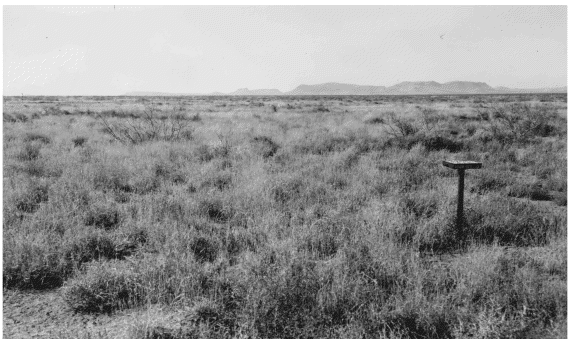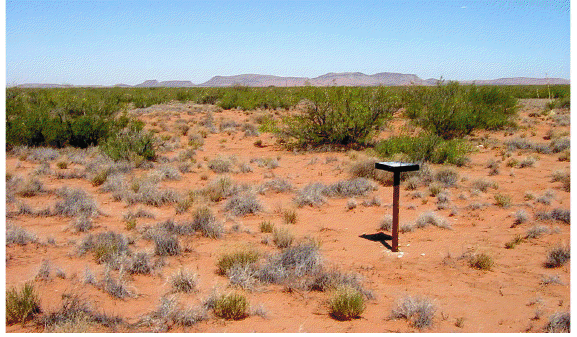Explaining Pronghorn Decline: The Answer is Hidden in Plain Sight

Pronghorn is an iconic American native species and, the only large game animal in the United States which evolved on this continent. In the days of the vast buffalo herds, pronghorn numbers possibly approached 50 million: they may have outnumbered bison! In those days these animals were found from Saskatchewan to Mexico, and from Oregon into Baja California.
Immediately below is an interesting profile on pronghorn:
Below is a pamphlet which summarizes some excellent work by some of the smartest range and wildlife people in Texas or for that matter the United States. It talks about fences, drought, coyote predation of pronghorn fawns, worms, habitat fragmentation, and the failed attempt to transplant 200 pronghorn in which 80% of the animals died within a few months and almost all of the survivors are dead now. The smart and dedicated people who have tried hard and failed both with the transfer, and to explain the cause for pronghorn decline do not at any point question the core-assumption that destocking the ranges is good for habitat and the wild animals that live on it. In all of this there is not one word about range destocking, and yet therein lies the root cause and explanation for wildlife declines in the desert southwest. Our range practices fundamentally damage habitats because we do not recognize the deadly effect of over-rest on grasslands that for 20 million years co-evolved with large number of grazing animals and as a result have come to need periodic intense animal impact, followed by very long recovery periods. In the absence of bison, Pronghorn need cattle and other domestics back on the ranges that have had large grazers for 20-million years!
The key insight to understanding pronghorn decline is that they numbered in the millions when bison numbered in the millions. Therein lies the insight needed to address pronghorn decline. Pronghorn as a species are dependent upon other large grazers. When the bison and other wild animals disappeared, cattle, sheep, goats, burros and horses replaced them. But for decades now, worsening ranching economics and the range-and-academic institutional advice have combined to remove livestock from the Southwestern desert grasslands. Accepted range theory says that over-grazing by large numbers of animals harms plants and wildlife. While it is true that ranching has damaged the Western ranges, the disappearance of large grazers and diverse animal communities creates another phenomenon called “over-rest.” This is as deadly as over-grazing: in the last 50 years, most range damage has come from “over-rest,” not “over-grazing.”
Shown above and below is the same spot on a federal experimental range in the Jornado del Muerto in southern New Mexico. It is perhaps 100 miles from Circle Ranch. It has been destocked for 60-years. Here is how it looked before destocking.
Here is the same spot 60-years later. Sixty years with no animals: look at the increased bare ground, the increased brush and the missing and dead or dying grass plants. If destocking deserts promotes rangeland health then this picture should show an improving grassland! Across the desert Southwest, destocked grasslands like these shown above are desertifying: shifting to desert.
“(Pictured above) is wilderness area under management by U.S. National Park Service (NPS). It shows the state of the land some 70-years after removal of all livestock, and having had hundreds of thousands of dollars spent on range conservation measures in the meantime! Clearly, NPS…has no idea what is causing such severe desertification: as bad as anything in Africa.” . . . Allan Savory
Unless we change these basic range practices, why should we expect different outcomes? For 70 years the range and academic bureaucracies have had their chance to prove that destocking the ranges work: the outcomes of many species including quail, pronghorn, mule deer and others speak for themselves. This range science holds that “over-grazing” is responsible for all aspects of range decline including brush incursion; in fact over-rest is doing most of the damage.
Habitat decline due to range destocking is the root cause, not over hunting, coyotes, cattle, fences, worms or climate change. Pronghorn decline is a symptom of rangeland decline, caused by the removal of cattle. We simply must break through the bureaucratic gridlock that is blocking so much as a discussion of this.
At a national level, we must call for a Congressional Inquiry into the range practices used across Texas and the West. There is only one range science being taught and used; it originated in the land grant universities. Alaska, Alberta, Arizona, British Columbia, California, Colorado, Hawaii, Idaho, Kansas, Montana, Nebraska, Nevada, New Mexico, North Dakota, Oklahoma, Oregon, Saskatchewan, South Dakota, Texas, Utah, Washington, Wyoming, and Yukon use it as do the BLM, Forest Service, NRCS, BIA, TPWD, etc.: i.e. everyone, everywhere. At this hearing the authorities should not be allowed to control the evidence and testimony given on these practices. These agencies sincerely consider themselves the Voice of Authority, and dismiss those of us who challenge them as uninformed and emotional. There can be nothing more important for ourselves and our communities than such a fundamental review.
Circle Ranch Pronghorn have increased in numbers during the period of severe Pronghorn decline across far-West Texas.
Here is an article on this topic which I wrote for the Big Bend Sentinel.
In 2013, Holistic Management International of Albuquerque is presenting three Cows and Quail workshops across Texas. Thes classes will demonstrate how to use cattle and wildlife to improve habitat for both: Go here for information.



